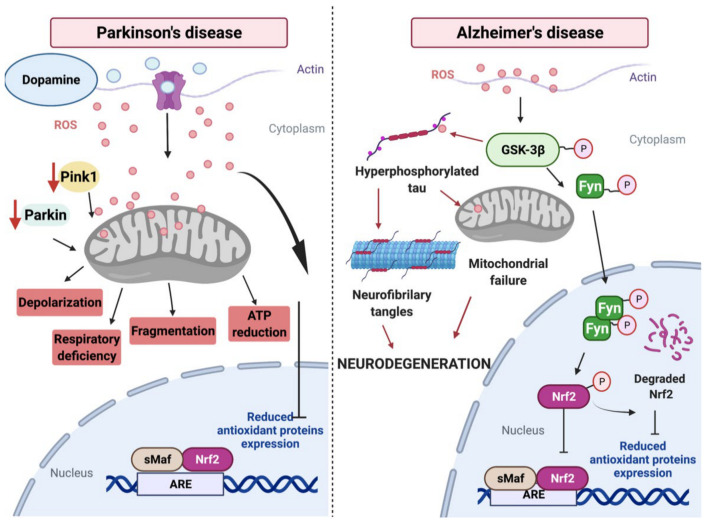Figure 2.
Contribution of the Nrf2 pathway to the pathogenesis of Parkinson’s disease and Alzheimer’s Disease. In PD, an increase in the dopamine release could affect mitochondrial function, producing an increase in ROS levels affecting Nrf2 activity and the response against the oxidative damage. Additionally, the decrease in Parkin and PINK expression levels shown in PD could affect mitochondrial function, inducing depolarization, fragmentation, respiratory deficiency, and ATP reduction. These changes will affect synaptic function, contributing to neurodegeneration and cognitive impairment present in PD. In AD, the GSK-3β protein, which is a kinase that promotes the anomalous phosphorylation of tau protein, promotes Nrf2 degradation by proteasome activity through the Fyn’s phosphorylation. Additionally, during AD, activated GSK-3β induces tau hyperphosphorylation, which could affect mitochondrial function. Later on, the accumulation of pathological forms of tau could lead to the formation of neurofibrillary tangles (NFTs), which is considered a hallmark in AD.

